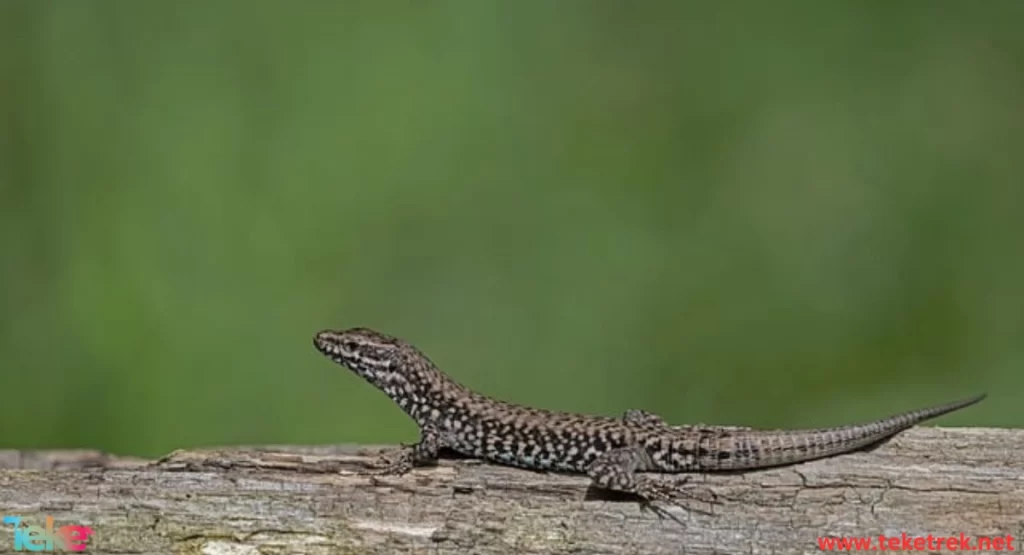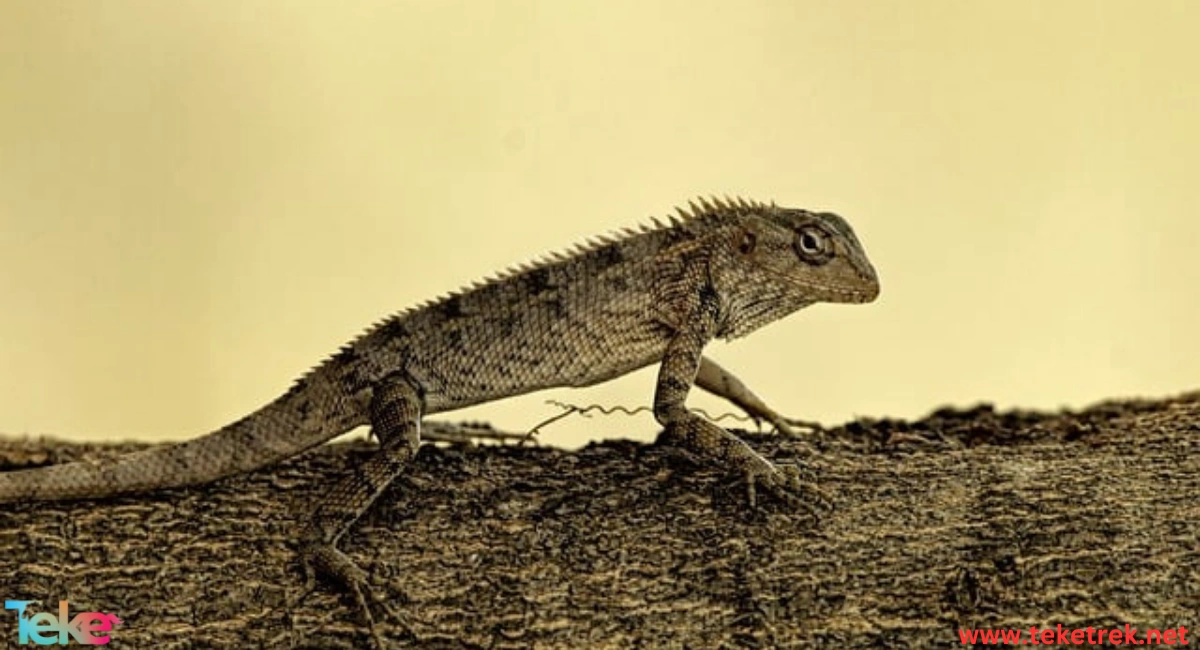The lizard is a species of amazing creatures spread throughout the world, characterized by a unique way of life full of mystery and playing an important role in natural biodiversity. Their sizes, colors, and adaptations to their environment are amazingly diverse, which arouses the interest of people in general and researchers in particular. Lizards have a great ability to adapt to surrounding conditions and survive, and they also have a diverse diet that includes insects, small mammals, and plants. It also contributes to maintaining the balance of the ecosystem, making it an essential part of the food chain in nature.
Knowing the behavior and structure of lizards helps us better understand nature and how to best manage it to ensure its sustainability and protection. In this article from Teketrek, we will discover together the most important information regarding lizards, including the environment, method of reproduction, features and other information. Follow along with us.

Lizard characteristics
- Body:
The shape of small and large lizards is characterized by being covered with hard scales that help them protect and camouflage.
– Some species may have long, slender bodies, while other species may have short, rounded bodies.
- Head:
The lizard’s head is characterized by strong jaws equipped with sharp teeth.
Lizards have small, mobile eyes that enable them to detect prey and move effectively.
- Tail:
The tail is an important part of the lizard’s body, as it uses it for balance, mobility, and sometimes for self-defense.
- Parties
The limbs of lizards are characterized by the presence of sharp claws that help them climb and move on various surfaces.
– In some species, lizard limbs may be well-developed for swimming.
Appearance of lizards
- Colors and decorations:
The colors of lizards vary between yellow, brown, green, gray, and black, depending on the species and the environment in which they live.
– It may be distinguished by different decorations that help it camouflage itself in its natural environment, as the shape of a large lizard differs from that of a small lizard.
- the size:
The sizes of lizards range from small, medium, and large.
- General shape:
The shapes of lizards vary between pointed, round, and curved species, depending on the adaptations they have developed to be suitable for their environment.
In short, lizards are distinguished by their scaly bodies, diverse bodies, and diverse colors that suit their environment and lifestyle.
What are lizards? What are the most important types?
Lizards are a group of reptiles in the Squamata family. This Family of lizard includes more than 6,000 species of reptiles, including true lizards, centipedes, and snakes. Lizards are characterized by their long, tapered bodies, short limbs, and external scales that cover their bodies. Lizards are found in most cold and hot regions around the world, and are an important part of biodiversity in many environments.

Types of lizards a to z
Common or Iberian lizard (Pordacis hispanicus)
Graceful lizard (Lacerta agilis)
Tropical house gecko (Hemidactylus mabouia)
Batoica lizard (Iberolacerta martinezricai)
Cinderella lizard (Psammodromus hispanicus)
Red-tailed lizard (Acanthodactylus erythrurus)
Valdivian lizard (Liolaemus cyanogaster)
Living lizard (Zootova vivipara)
Bukaji or Galician lizard (Podarcis bocagei)
Slender or pale lizard (Liolaemus tenuis)
Gecko (Tarentola mauritanica)
Green lizard or teyu (Teius teyou)
Night orchid (Lepidophyma flavimaculatum)
Blue tongue lizard (Tiliqua)
Lizard reproduction
Lizards follow various reproductive processes that vary depending on the species and environmental conditions in which they live. Lizard reproduction depends mainly on internal pollination, where an encounter occurs between a male and a female to achieve insemination.
Lizard reproduction pattern
- Egg reproduction:
The female lays eggs in the surrounding environment.
The number of eggs and the incubation period vary depending on the species.
– When the eggs hatch, baby lizards emerge from them, which continue to grow and develop.
- Live birth:
The female gives birth to young lizards directly without eggs.
Pregnancy lasts for a short period before the babies are born.
Children are provided with maternal care immediately after birth.
Habitat of lizards
Lizards are found in most parts of the world, except for the Poles and some remote islands.
- They are found in a variety of environments including deserts, rainforests, prairies, and urban areas.
- There are different types of lizards and their adaptations to their surrounding environments.
- Some species are found in desert and dry areas, while other species are found in humid areas and forests.
The importance of lizards in the ecosystem
Lizards are insect predators, and thus play an important role in controlling insect populations that may be harmful to plants and the environment.
- Lizards may transport plant seeds through their droppings, which contributes to the spread of plants in the environment.
- Lizards play an important role in balancing the ecosystem by regulating insect populations and controlling some harmful species.
- Lizards are food for many predators such as birds and snakes, making them an important part of the food chain.
- Lizards make great use of their exposure to sunlight to regulate their body temperature, which helps them adapt to changes in temperature.
- Lizards contribute to increasing biodiversity in the environment through the presence of different species and their impact on the environment.
- Some species of lizards may play a role in the pollination process of some plants by transferring pollen.
- The presence of lizards contributes to the sustainability of the ecosystem and maintaining the balance between the various living and non-living components of the environment.
- Lizards are used as a subject of scientific studies and research to understand their behavior and their impact on the environment.
- Lizards have cultural and heritage importance in some societies, as they are considered a symbol of patience, strength and adaptability.
What does the presence of lizards in the house indicate?
The presence of lizards in the home can be evidence of a suitable environment for them to live and reproduce. Here are some reasons lizards may be attracted to your home:
- The presence of insects:
Lizards rely on insects as their main food source, so if there are an abundance of insects in the home, they may attract lizards to feed on.
- Temperature and humidity:
Lizards love warm, humid environments, so if the house temperature is high and the humidity is also high, this will act as an attraction for lizards.
- The presence of water resources:
If there are water sources in the home, such as bathrooms or kitchens, this may attract lizards that need water to drink.
- Plants:
If there are plants inside the house, this may attract lizards that use them as a refuge and food source.
If you do not want lizards in the house, you can follow some measures such as repairing gaps and cracks that could be an entry point for them, and reducing the presence of insects inside the house to reduce the attractiveness of the place for them.


How do lizards defend themselves?
Lizards rely on several strategies to defend themselves when exposed to danger, the most prominent of which are:
- Camouflage: Lizards depend on their ability to camouflage themselves with their surrounding environment, which makes them invisible to enemies and reduces their chances of being exposed to danger.
- Dispersal: When lizards are exposed to danger, they may quickly flee to a safe place or disperse throughout the environment to hide themselves.
- Some types of lizards can change their color or show different designs on their skin as a means of intimidation or to impress enemies.
- Biting defense: In some cases, lizards defend themselves by biting enemies or predators.
- Some types of lizards can undulate their bodies in a way that frightens enemies.
In general, lizards’ self-defense strategies depend on the type of danger and the conditions of their surrounding environment.
FAQ
There are many common questions asked by those interested in raising and caring for lizards. Here are the most important questions:
- How do you get rid of lizards at home?
There are many materials you can use if you want to get rid of lizards, including mothballs, pepper spray, onion juice, cold water, and coffee powder as well.
- Do lizards cause harm to humans?
No, lizards do not transmit diseases to humans and do not cause any diseases.
- Do lizards hear?
Yes, lizards have external ears that they use to hear.
- Why does a lizard’s tail remain in motion after death?
The tail stays in motion due to the reaction of the neurons stored in the tail.
- Do lizards drink water?
The lizard can obtain water in the dry season by condensing the dew drops that collect on its skin.
- How long lizard live?
Geckos survive for about 10-15 years in a typical home, the Iguanas survive for about 20 years, the Chameleons are known to survive for around 5-7 years, the biggest of the reptiles, live for about 40 years.
- Are lizards OK around the house?
Yes, Lizards prevent dangerous insects from breeding in our house.
In short, it can be said that the lizard is a unique and important organism in the environment, playing a vital role in the balance of the ecosystem and maintaining biodiversity. In addition, the lizard has unique features that make it of interest to many researchers and nature lovers.






